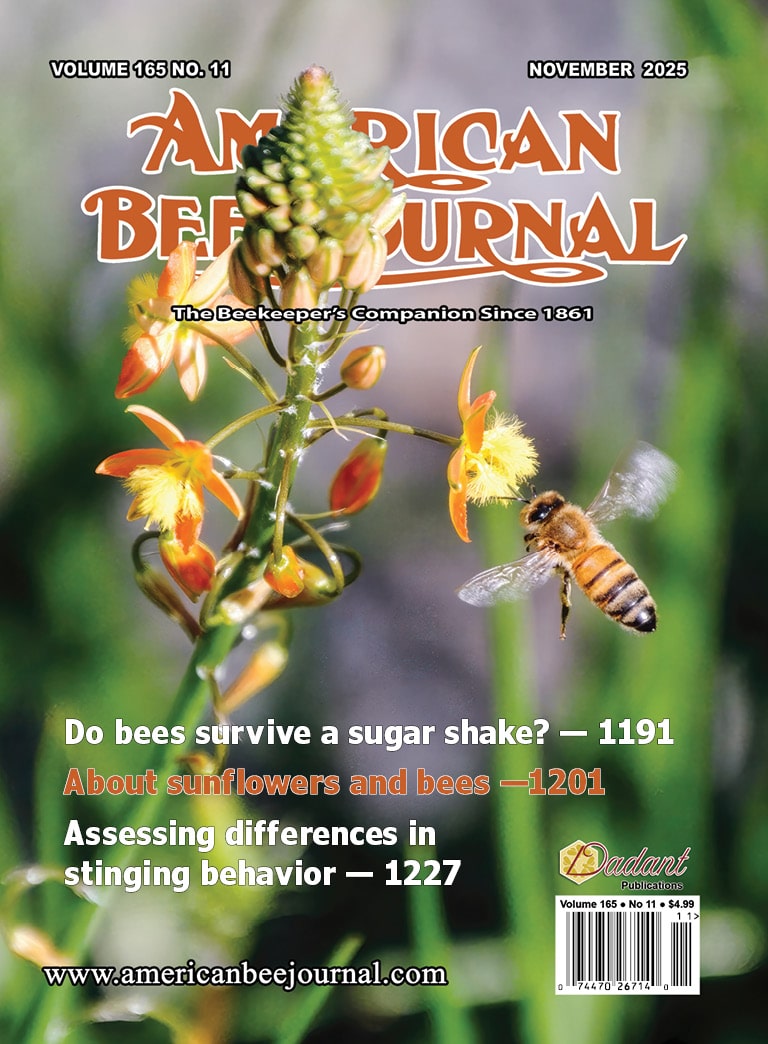DEAD QUEEN RESUSCITATED?
On June 26, as my assistant Tom Facey and I were checking out a hive with a new queen, I found the young lady on a frame and picked her up to mark her. I put the green dot on her thorax, and was going to release her, when I noticed that she had stopped moving. I laid her down on the frame and she just lay there on her back, motionless. Some worker bees walked over to investigate and began to groom her. Soon other bees joined them, until a small cluster of bees were around her, grooming her, and seemingly trying to give her mouth-to-mouth resuscitation. This went on for at least 4 or 5 minutes, while she lay there unmoving and apparently lifeless. Finally, just as we were about to give her up for dead, there seemed to be a faint quiver in her abdomen. Were we seeing things, or had the attendant bees just bumped her? After another minute or so, her abdomen quivered again, and again, and again! Then a minute or so later, her legs began to move slightly. She was still lying on her back, so we could see them quite clearly. She was moving her legs! After a few more minutes, she turned over on her belly and seemed to be resting; then slowly she began to move around. All told, we watched her for at least 15 minutes, as she gradually regained her strength and finally began walking around on the frame freely, with some attendants following her and grooming her. We finally put the frame with the queen back into the hive, with lots of questions:
- Had she gone into a state of “emotional” shock, from which she gradually recovered?
- Had I somehow injured her as I picked her off the frame, inducing a traumatic coma?
- Did she have a “heart attack” or something like it, from which her body was able to recover?
- Will she survive this trauma?
- If she does survive, will it affect her health, her vitality, her fertility, her productivity?
- Has anyone else ever observed a seemingly dead queen resuscitate?
Update: On July 2, I found her majesty marching around her quarters as if nothing had happened, and laying up the frame she was on as any good queen should do. I’ve checked back on her each week since then, and she is filling up her nuc with brood just as well as all our other new queens. If we sell her along with our other nucs, we’ll give the buyer a copy of this report, with a warranty for replacement if she should die before the end of the year.
–Horace Huse
Toledo GROWs, Toledo, OH
SHB not widespread in Australia
In the July 2019 issue of the ABJ, there is a very informative article by William Blomstedt, “The Spread of the Small Hive Beetle.”
I would like to draw your attention to a point that, while being technically correct, is misleading, and that is the fact that the whole of Australia is coloured yellow indicating that the beetle is a universal problem in this country.
Australia’s area is about 78% the area of the United States but is divided into only 7 states including the small, island state of Tasmania, whereas USA is split into many more, quite small packages of land. So, in your country it might be reasonable to assume that, if the SHB is present at one end of a state, then it will cover that state.
The state of Western Australia has slightly more than 25% of the area of USA and the beetle is present only in the extreme north east in a small area around the Ord River Irrigation Area at Kununurra which is more than 3,000 kilometres by road from the capital, Perth.
And it didn’t arrive there until after 2007 though it is shown on the map as covering the state between 2004 – 2006.
Between the 2 places there is a large desert area and no movement of bees is permitted from the north southwards.
Possibly, at some future time, this pest might hitch a lift southwards but, to date, it hasn’t been found. So, I think it misleading to show the whole of WA as being home to the Small Hive Beetle since the main beekeeping areas are in the south west.
Kindest regards
Stan Taylor
Follow-up letter:
Further to my previous email concerning the article in ABJ July 2019 about the global spread of the Small Hive Beetle, I have since managed to ….


